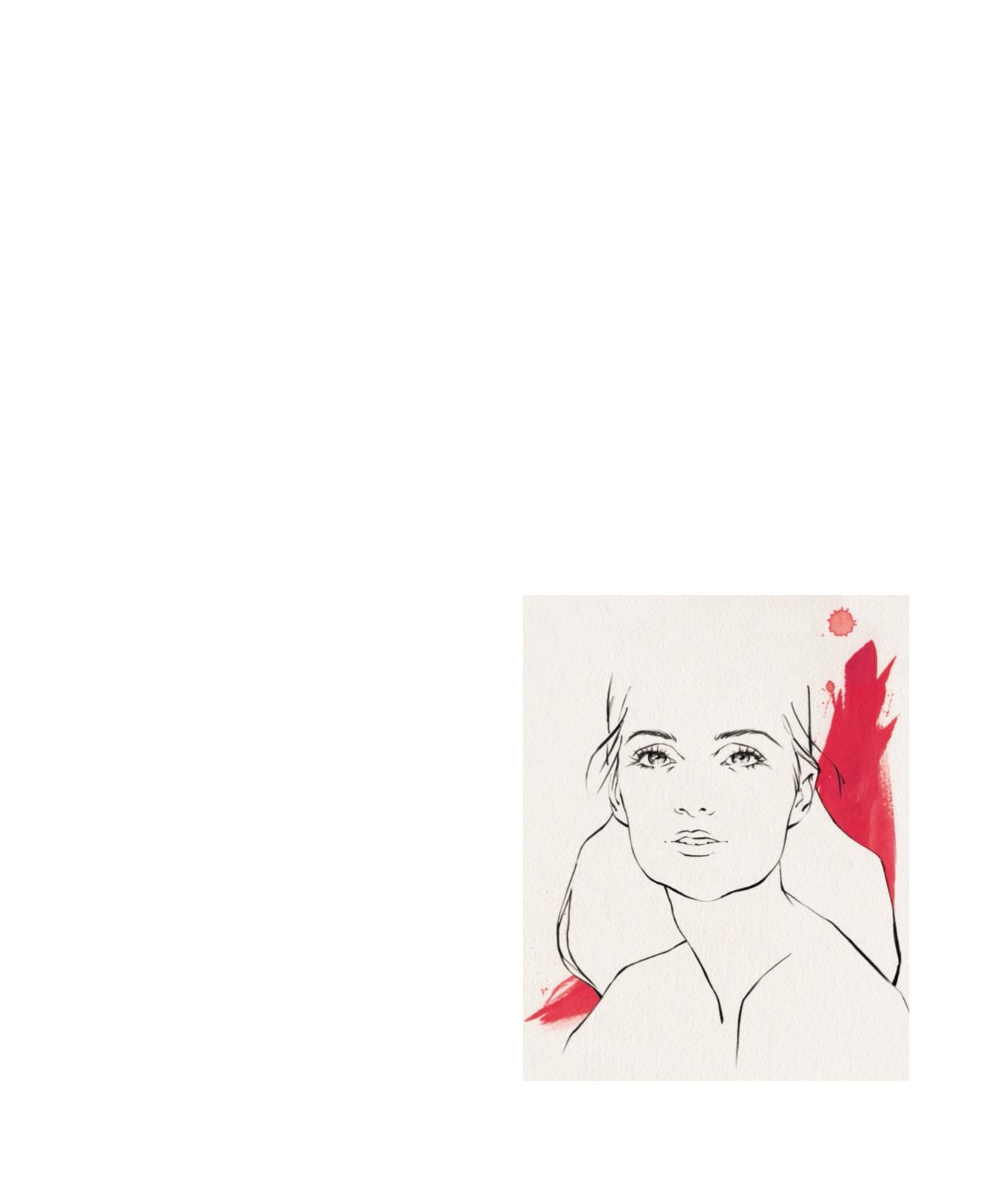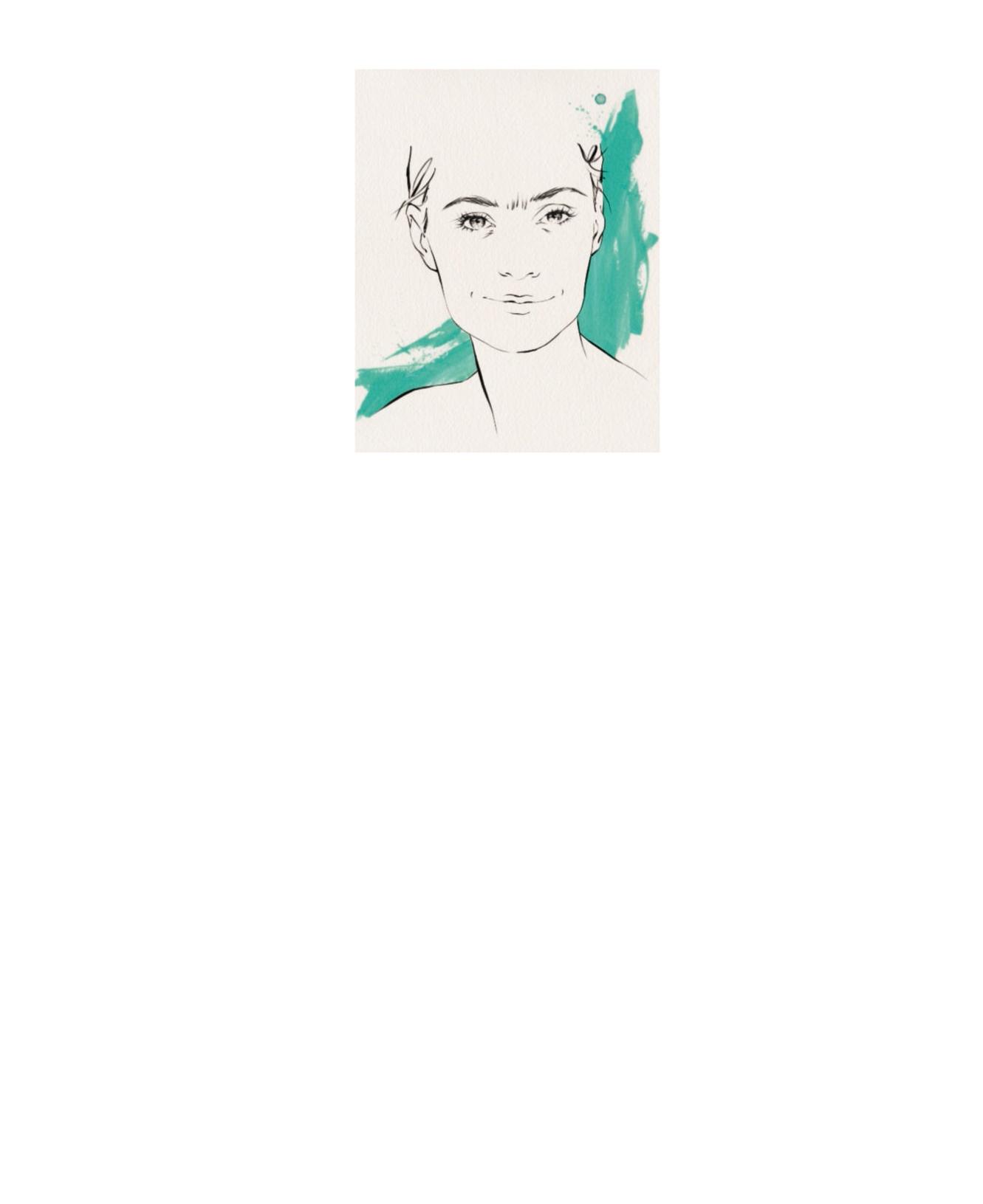
7 minute read
BEAUTY
When your regular routine doesn’t feel like enough
What at-home skin-care products do well:Cleanse, moisturize, plump, andprotect. Where they fall (gulp) short? Addressing deeper problems, like lines, sun spots, and dark circles. Thisguide to next-level treatments helps take out some of the sting (and the mystery).
Advertisement
“IT IS NEARLY IMPOSSIBLE to erase under-eye darkness with an over-the-counter cream,” says Dendy Engelman, a Manhattan dermatologic surgeon. “I see patients spend thousands of dollars on products that promise to get rid of dark circles, and while their under-eye skin may be smoother, thanks to those creams, the darkness never goes away. If they would put that money toward a prescription cream or a more powerful in-office treatment, they would be far happier with the result.” This is not a truth most people want to hear. It’s easier (and usually less expensive) to apply an over-the-counter cream each night, believing it will make all unwanted signs of aging disappear. But there are limits to how aggressive topical creams, even those that require a prescription, can be. And so for issues that start deep in the skin’s dermis, those products may not get you all the way to the finish line. What will? The in-office treatments covered in this story. Real Simple asked top dermatologists which aging issues are hardest to treat at home—and how these same conditions may be successfully diminished by an M.D. Read on for their most common strategies, plus additional options for times the recommended regimen is either not enough or not quite right for you.
Written by Genevieve Monsma Illustrations by Emma Leonard

beauty
COMPLEXION COMPLAINT Sun spots
IN-OFFICE ATTACK: Zap excess pigment with a laser treatment that targets brown melanin. Three options (with funny-sounding proprietary names) are the Alexandrite, the Q-switch, and the Nd:YAG. An intense pulsed light (IPL) treatment is another (non-laser) option. Note: Going to a dermatologist, not a medi-spa technician, is imperative for dark-spot treatment. Why? First, “to make sure what you’re targeting is indeed a sun spot and not skin cancer, such as melanoma, which may become worse if incorrectly diagnosed and left untreated,” says Tanya Kormeili, a Santa Monica dermatologist and a clinical instructor of dermatology at UCLA. Second, because while the procedures are fairly straightforward on some skin, different complications can arise on various complexions, and improper treatment could cause burning or scarring, warns Kormeili. COST: Laser sessions are close to $500 and up, but one or two sessions are often enough to eradicate the spot(s). The average cost of one IPL treatment is around $450; most patients need three to four. EXPECT THIS: Both lasers and IPL feel hot as the device zaps. But the procedures typically take just a few seconds per spot. After the treatment, the area will darken, then flake off within two weeks. RESULTS: Once the spot is gone, the result is technically permanent. But the area could start overproducing melanin again if exposed to ultraviolet (UV) rays, so most doctors stress daily sun protection.
Not enough/not right foryou?
Some doctors advocate using a topical lightening product prior to a laser or IPL treatment. “I’ve found that lightening a spot, even slightly, before we use lasers garners better, faster results,” says Engelman, who puts her patients on an eight-week regimen of a prescription lightening treatment, such as Tri-Luma (a combination of a retinoic acid, a corticosteroid, and hydroquinone). Gervaise Gerstner, a Manhattan dermatologist, says she has found success dabbing a spot with a swab soaked in a strong acid, like TCA (trichloroacetic acid), to remove several layers of skin. Sometimes this is enough to sizzle away the color. Liquid nitrogen may also be used in this way. COST: Tri-Luma is about $120 per tube. The average cost of using acid or liquid nitrogen on a spot is usually $200 to $400. EXPECT THIS: Most creams help fade, but do not totally erase, spots. That’s why they are used in combination with, not as a substitute for, lasers. The acid or liquid-nitrogen spot treatment will burn briefly, and the skin may look red for several weeks before fading to your natural tone. RESULTS: Removing a spot with acid or liquid nitrogen can be permanent if you are diligent about sun protection.
COMPLEXION COMPLAINT Slack jawline
IN-OFFICE ATTACK: Inject a volumizing filler, such as Voluma, Radiesse, or Restylane, above the jaw to pull slack skin taut. “It’s like putting pillows beneath a comforter,” says Michelle Yagoda, a Manhattan plastic surgeon. “You haven’t changed the comforter’s length, but the pillows prop it up so it doesn’t hang so far off the bed.” Some doctors inject just above the jawline; others aim for the tops of the cheeks and temples, since those areas hollow with age, and putting filler there rebalances the face. COST: About $850 and up.

beauty EXPECT THIS: Injecting takes about 15 minutes and feels more like uncomfortable pressure than pain. You can use an ice pack during the treatment and on and off for 24 hours afterward. Bruising is possible. RESULTS: A lifted result can last up to two years—and possibly longer, because the treatment may stimulate collagen production in the area, leading to long-term plumping. “This could be because injecting the filler is like a small trauma and causes the repair process to start, during which collagen is produced,” says Yagoda.
Not enough/not right foryou?
You may also target slack skin with a tightening treatment, such as Ultherapy or Thermage. They use ultrasound and radio-frequency technology, respectively, to “heat the skin, create thermal damage, and boost collagen production,” says Mona Gohara, an associate clinical professor of dermatology at Yale University. Or a doctor can inject Kybella, a new, U.S. Food and Drug Administration–approved synthetic form of bile acid (yes) that breaks down fat cells in a double chin and makes the jawline look less jowly, says Gohara. COST: Ultherapy and Thermage each average about $2,500, and most patients need one to two sessions. Kybella will run you an average of $1,500 for one treatment of up to 50 small injections; many patients need two to three treatments spaced about a month apart. EXPECT THIS: Tightening treatments are painful, even after a topical or injectable anesthetic has been applied, and can take up to an hour. Kybella can be uncomfortable but should take no more than 15 minutes. There may be two to three days of discomfort and swelling afterward. RESULTS: It can be two to three months before you see the lifting result of a tightening treatment take two treatments spaced three months apart to relax the muscles thoroughly enough that the line completely vanishes.
because collagen boosting (and collagen production) take time. But a good result can last for two or more years. Results, however, vary widely: Some patients enjoy dramatic improvements, while others barely notice a difference. As for Kybella, the results are permanent because the destroyed fat cells cannot come back.
COMPLEXION COMPLAINT Forehead wrinkles
IN-OFFICE ATTACK: Relax the muscles under the creases by injecting a neurotoxin, such as Botox or Dysport. “The face is the only place on the body where muscle is attached to skin,” says Yagoda. And “each time the muscle moves, so does the skin, creating deep wrinkles that cannot be smoothed with creams alone.” COST: About $350 on average. EXPECT THIS: The injections typically take less than 15 minutes, and pain is minimal (quick pricks). Post-treatment, an ice pack can bring down swelling. Bruising is also possible. RESULTS: For first-timers, full muscle relaxation may take up to two weeks; veterans may smooth out after two or three days. For all patients, the treated muscles should remain relaxed for three to five months. For very deep lines, Yagoda says, it may
Not enough/not right foryou?
If a deep crease is still visible two weeks after your injection and there is no visible muscle movement, some doctors use a thin hyaluronic acid filler, such as Restylane, to fill it in. Yagoda, however, advocates holding off on filler in the same area until after a second round of neurotoxin, for the reason that she outlines above. “Injecting sooner than that puts you at risk for developing a bump or a ridge along a line that would have eventually smoothed out on its own,” says Amy Derick, a dermatologist in Barrington, Illinois. COST: On average, $600. EXPECT THIS: Quick pricks. RESULTS: There may be initial swelling, but it should subside within a day or two, revealing the result. Bruising is common. The area typically remains plumped for up to a year. Keep in mind, though, that fillers help the skin build more of its own collagen, so even after the injectables have worn off, a crease should never become as deep as it was initially.
COMPLEXION COMPLAINT Broken capillaries
IN-OFFICE ATTACK: One to three treatments with a laser (Nd:YAG or a pulsed-dye laser, such as the Vbeam) or with an IPL device that targets red pigment will destroy dilated or broken capillaries. COST: One laser or IPL treatment to remove a single capillary can cost $150 and up; most people need from one to three treatments for each capillary. EXPECT THIS: As the capillary is being annihilated, you may feel as if










